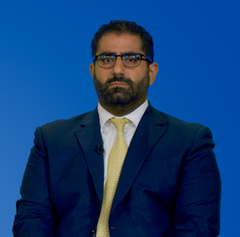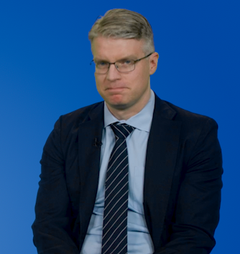
Advancements in NSCLC Profiling and Understanding Immunotherapy Resistance
Experts examine primary and acquired resistance mechanisms in immunotherapy, while promoting realistic treatment strategies.
Episodes in this series

Mark Socinski, MD: I do use [chemotherapy] I-O [immuno-oncology] combinations, although the attractiveness of using a PD-1 or PD-L1 by itself is quite distinct because those patients tolerate therapy so, so well and they respond. But if someone has a high tumor volume, they’re very symptomatic, even with a high PD-L1, we know that response rates are in the range of 20%, 25% higher than immuno-monotherapy. So in a in a sicker patient, if you will, even with high expression, I will include chemotherapy in those. But I would agree with your comments about the PD-L1 lower the PD-L1 negative in that population.
Joshua Sabari, MD: Often I talk to my residents and fellows about a visceral disease crisis vs an emotional crisis of disease. And often when patients come to see you, they want to start therapy as soon as possible. And I think it’s our job, it’s our role, to help guide patients to the correct therapy. But you’re right, if someone has a very large burden of disease, sometimes I’ll start chemotherapy while I’m waiting for the next-generation sequencing. And if someone’s driver mutation negative, high burden of disease, fit, younger patient, I agree with you, I don’t have the 9 to 12 weeks to wait for the response to immunotherapy. So I am adding a platinum doublet in that setting.
Mark Socinski, MD: You’ve got to get that disease under control quickly. Is there a subset of patients where you are more apt to use a combination immunotherapy like these nivo [nivolumab] plus ipi [ipilimumab] or durva/treme [durvalumab/tremelimumab]…approach? What are your thoughts there?
Joshua Sabari, MD: I think the patients who are PD-L1 negative, it’s important to explain the biology here a little bit. You know, it’s the mutations or the coalterations that are driving down a sort of suppressive immune microenvironment. That’s what’s leading patients to have a low PD-L1. So if you identify a patient that’s low PD-L1 and has a KRAS…alteration, that patient is not going to derive significant benefit from immunotherapy as a single agent. And we now have retrospective data from both the POSEIDEN trial [NCT03164616] as well as CheckMate 9LA [NCT03215706] showing that that subset of patients may actually derive significant benefit from the addition of a CTLA-4 inhibitor. So, that is the specific group that I’ve started to look at in my practice. And there are now prospective trials that are in development to study that patient population in more detail.
Mark Socinski, MD: One of the things that’s been evasive so far, I think, is the mechanisms of resistance, whether they’re primary or acquired with regard to immunotherapy. What are your thoughts there? You’ve mentioned some of the markers as STKI11 , where, you know, I don’t know that I might step up my approach, as you’ve mentioned. I wouldn’t necessarily deny a patient exposure to that. But the level of optimism that you’re going to make a big dent in the diseases is somewhat less. What are your thoughts about resistance and what we should we be thinking about and what might be out there for these patients?
Joshua Sabari, MD: I I think the sort of second-line driver mutation–negative population is one of the recent failures of our time. So we have not really moved the needle. If you look at what we’re offering patients in the second line, it’s docetaxel or docetaxel plus ramucirumab. Those are the same therapeutics we were offering our patients 10 [or] 15 years ago, right? Response rates are low, right? Twenty-three percent progression-free survival, about 4.5 months. So we need to do more for that patient population. And unlike in the driver-mutation population, where we can easily identify resistance and easily identify new opportunities for targeted therapies in the immunotherapy resistant population. The mutation-negative population—we’ve not had much success there. And now you’ve had patients who get 2 or 3 cycles of immunotherapy and have progression of disease. Are those immune suppressed? Is that a suppressed immune microenvironment? Is that T-cell exhaustion, or is that primary refractory disease? And we actually treat every single patient the same, unfortunately, at the time of progression. And we know that the biology of immune resistance is quite heterogeneous and quite broad.
Transcript is AI-generated and edited for clarity and readability.
Newsletter
Stay ahead of policy, cost, and value—subscribe to AJMC for expert insights at the intersection of clinical care and health economics.

















































